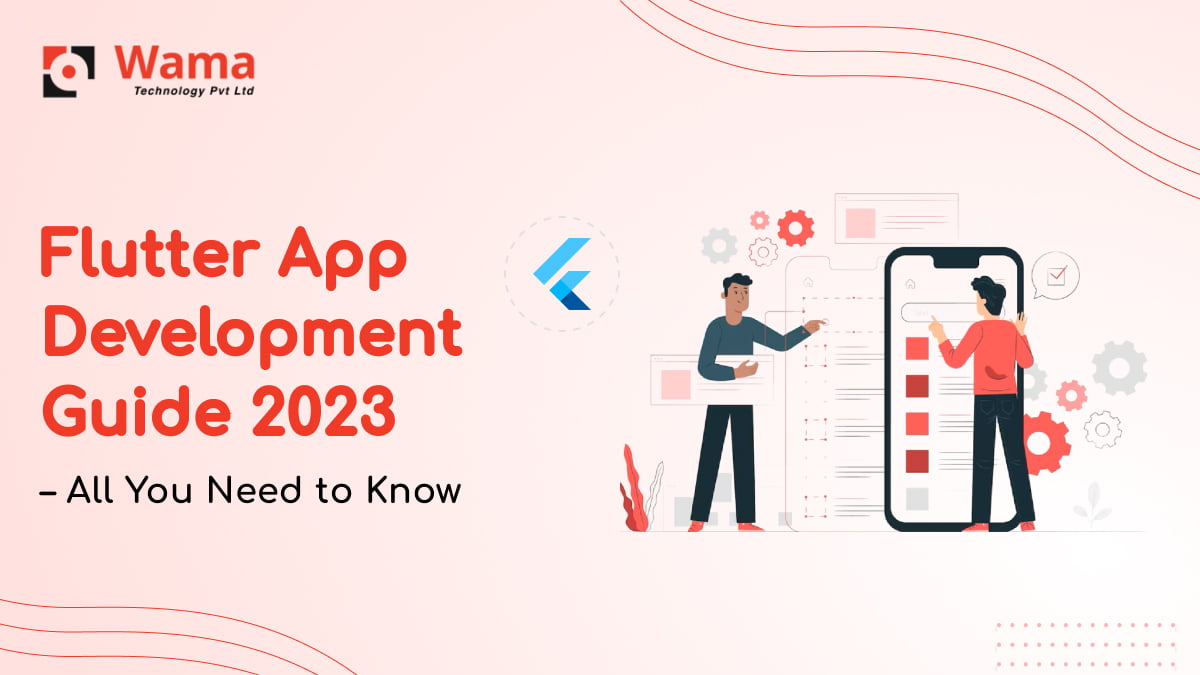Google created Flutter, an advanced framework for making mobile apps on multiple platforms using just one code. It’s advantages and developer-friendly features accelerate the app creation process while delivering exceptional user experiences. This Flutter App Development guide explores main benefits and offers effective tips for crafting a top-notch flutter app.
Why is Flutter the future of application development?
Flutter stands out among application development frameworks with numerous advantages. It surpasses other popular ones by providing flexibility, native speed, and a strong support community. Moreover, being backed by Google adds credibility, promising future updates and help. Wondering why it’s exceptional? Let’s explore its strengths now.
Strengths of Flutter
- Faster development times: Flutter, a user-friendly framework, speeds up mobile app development significantly. Seeking both feature-richness and speed? Flutter fits the bill perfectly. Witness changes instantly on your device with Hot Reload. Adding new features takes mere moments, and bug fixes and experiments are just as swift. Customizable widgets and shorter flutter app development cycles further aid fast development. It fosters a seamless developer-designer collaboration, ensuring neither feels overwhelmed.
- Easy to learn and master: One of the key factors contributing to the success of this framework is its user-friendly nature, making it effortless to learn. Unlike many other frameworks out there, Flutter grasps the fact that developers prefer not to dig through extensive documentation for basic tasks. Instead, it provides a smooth learning curve, making it appealing for newcomers to embrace and integrate into their projects.
- One Code – Two Platforms: When you opt for Flutter, you save time and effort as you can code for both iOS and Android simultaneously. Just write code once, and you’re ready to roll. This leads to improved product quality and reduced testing. However, if your apps have distinct features or user interfaces, they require separate testing.
- Tons of Plugins: Flutter, a fantastic framework, offers an abundance of plugins to make flutter build a breeze. This means you don’t have to start from square one when adding new features. The cherry on top is the plethora of customizable tools, widgets, plugins, and packages that can be adjusted to fit your needs perfectly. For example, you can easily integrate Android material design along with the material theme that comes with it. In a nutshell, you have a treasure trove of resources to explore and play around with as you experiment to your heart’s content.
- Outstanding Performance: Flutter delivers great performance out of the box as it is built on C++, C, Skia, and Dart. This means that it performs as well as native code when compiled. No need for an interpreter. Overall, it overcomes the disadvantage of the hybrid framework and ensures optimal performance.
- Support for various platform features: Flutter empowers developers by granting direct access to a wide range of platform features. These include the camera, geolocation, and device sensors. Such access enables the creation of mobile apps that fully utilize the device’s capabilities, offering users a diverse array of features to enjoy.
- Active community and ecosystem: Flutter has a large and active community of developers who actively share experiences and create libraries and tools that extend the functionality of the framework. This creates a powerful ecosystem that makes it easy to develop and maintain Flutter applications.
All of the above points suggest that Flutter is ready for the future. It can easily improve your flutter application development process and delivery time. Having reduced app development efforts by 23% in terms of time and cost, it can be said that Flutter is a boon and the ultimate solution for cross-platform app development.
Flutter App Development Guide Which Efficiently to Build Quality Apps
If you are looking for a top-notch flutter create app, follow these helpful tips to boost your efficiency:
- Check out the Flutter documentation and tutorials. Learn the basics and best practices to get the most out of the framework.
- Utilize hot reload for immediate viewing of application changes and faster code debugging, significantly expediting the Flutter application development process.
- Use the predefined interface elements in the Flutter framework to create an attractive look and feel for your application. Customize these elements, and add animations so that users can easily interact with your application.
- For more convenient structuring of your code, it is recommended to divide it into separate modules and components. This allows code to be reused and makes it easier to maintain in the future. For flutter development, it’s wise to employ architectural patterns like BLoC or Provider for better state management.
- Test your application both at the unit test level and at the integration test level to find and fix possible problems and bugs.
- Connect and be a part of a vibrant flutter app developer community. Join discussions on forums, talk on Slack, and attend meetups to receive guidance and help from seasoned developers.
- Continuously tend to your app, ensuring it’s always in sync with the latest Flutter versions. Resolve any problems that crop up promptly. Stay informed about Flutter’s latest news and updates to leverage new capabilities and improvements.
In Conclusion
Flutter, a robust mobile app framework, has gained widespread recognition for its app-building capabilities. It has given birth to several successful apps like Google Ads, Alibaba, Reflectly, and Hamilton Musical. These examples vividly showcase Flutter’s potential in crafting top-notch, efficient, and user-friendly mobile applications. If you’re seeking a reliable technology partner, choose Wama Technology, the best flutter app development company, for top-notch app development. Let’s bring your ideas to life!
